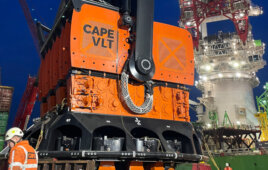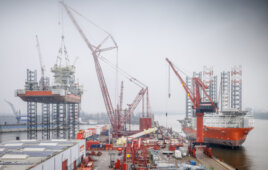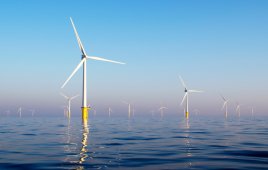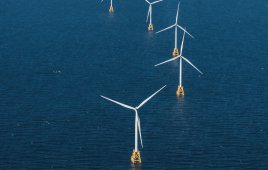Editor’s note: This article comes from Carnegie Science. According to new research from Carnegie’s Anna Possner and Ken Caldeira, there is considerable opportunity for generating wind power in the open ocean, and particularly the North Atlantic. Their work is published in “Proceedings of the National Academy of Sciences.”
On average, wind speeds are higher over ocean than over land. Wind turbines in the open ocean could in theory intercept more than five times as much energy as wind turbines over land. This presents an enticing opportunity for generating renewable energy through wind turbines. But it was unknown whether the faster ocean winds could actually be converted to increased amounts of electricity.
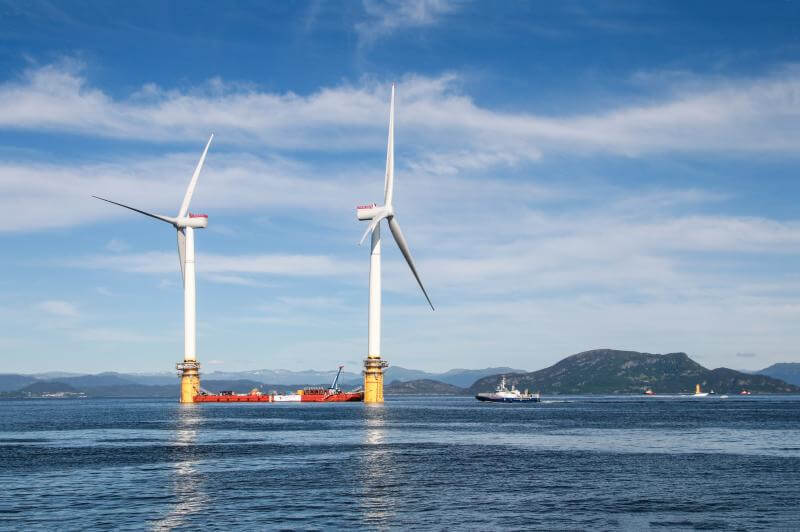
According to new research from Carnegie’s Anna Possner and Ken Caldeira, there is huge energy potential for some ocean-based wind farms. The research concludes that some offshore farms generate at least three times more power than the ones on land.
“Are the winds so fast just because there is nothing out there to slow them down?” asked Caldeira. “Will sticking giant wind farms out there just slow down the winds so much that it is no better than over land?”
Most of the energy captured by large wind farms originate higher up in the atmosphere and is transported down to the surface where the turbines may extract this energy.
Other studies have estimated that there is a maximum rate of electricity generation for land-based wind farms, and have concluded that this maximum rate of energy extraction is limited by the rate at which energy is moved down from faster, higher up winds.
“The real question is,” Caldeira said, “can the atmosphere over the ocean move more energy downward than the atmosphere over land is able to?”
Possner and Caldeira’s sophisticated modeling tools and compared the productivity of large Kansas wind farms to massive, theoretical open-ocean wind farms and found that in some areas ocean-based wind farms could generate at least three times more power than the ones on land.
In the North Atlantic, in particular, the drag introduced by wind turbines would not slow down winds as much as they would on land. This is largely due to the fact that large amounts of heat pouring out of the North Atlantic Ocean and into the overlying atmosphere, especially during the winter. This contrast in surface warming along the U.S. coast drives the frequent generation of cyclones or low-pressure systems, that cross the Atlantic and are very efficient in drawing the upper atmosphere’s energy down to the height of the turbines.
“We found that giant ocean-based wind farms are able to tap into the energy of the winds throughout much of the atmosphere, whereas wind farms onshore remain constrained by the near-surface wind resources,” Possner explained.
However, this tremendous wind power is very seasonal. While in the winter, North Atlantic wind farms could provide sufficient energy to meet all of the civilization’s current needs, in the summer such wind farms could merely generate enough power to cover the electricity demand of Europe, or possibly the United States alone.
Wind power production in the deep waters of the open ocean is in its infancy of commercialization. The huge wind power resources identified by the Possner and Caldeira study provide strong incentives to develop lower-cost technologies that can operate in the open-ocean environment and transmit this electricity to land where it can be used.
Filed Under: News, Offshore wind

